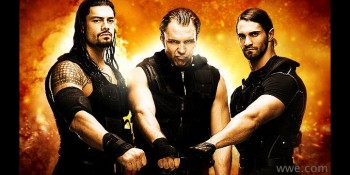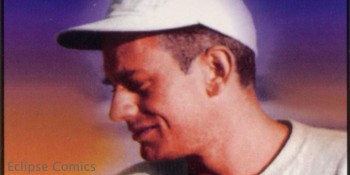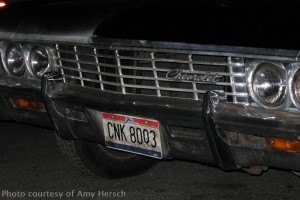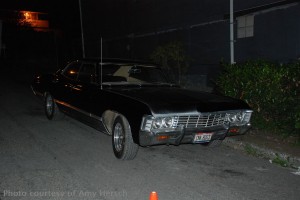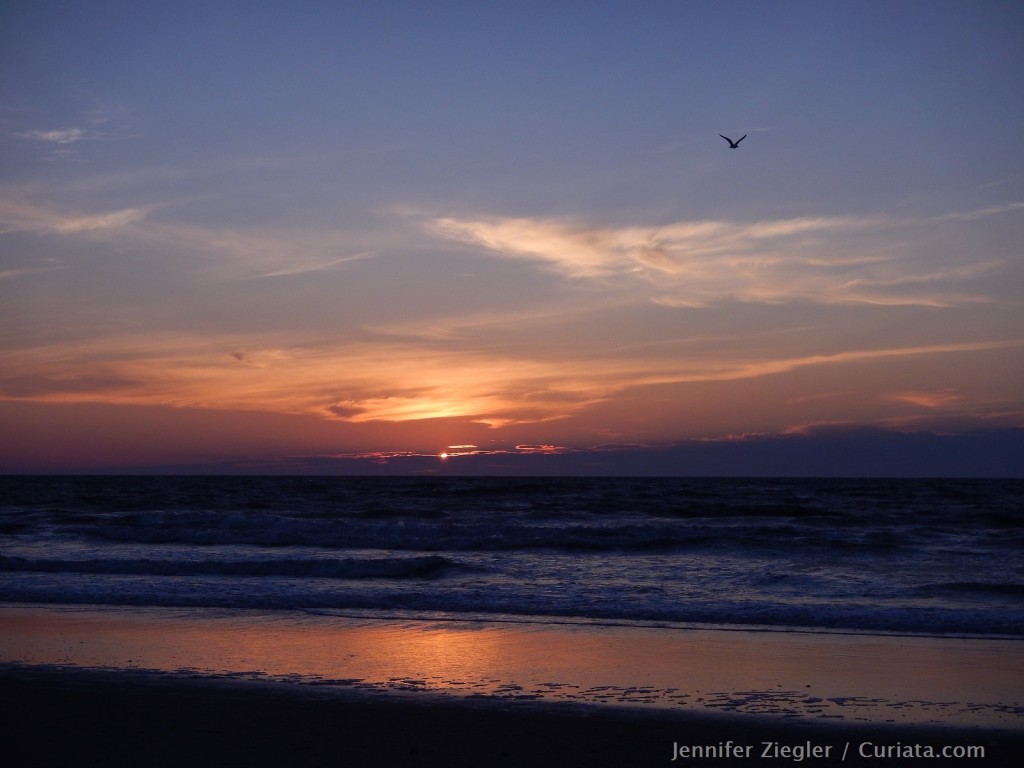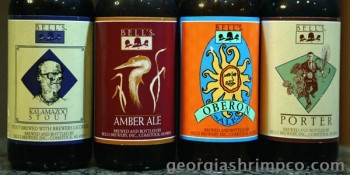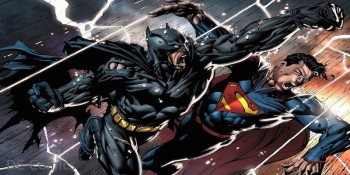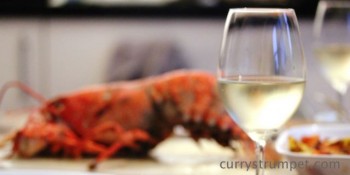An era of professional wrestling is about to end, and we never even took the time to like it.
Triple H recently proclaimed a new “Reality Era” — although that will never be accepted by anyone to denote a time period in which Kane still exists. Nonetheless, a change is underway in WWE.
People tend to toss around the word “era” in wrestling pretty freely. The Hogan Era, the New Generation Era, the Attitude Era, the Ruthless Aggression Era, and the PG Era are generally accepted by fans. Most of these “eras” correspond to about a five-year timespan, but if the best way to define an era in professional wrestling is by the talent involved, I would argue that wrestling moves in decade-long cycles.
The eras here defined roughly correspond to WrestleManias, with the next era beginning at WrestleMania 31. They include the 1985-94, kid-friendly, Early WrestleMania Era, the 1995-2004, more mature, Attitude/Aggression Era, and the current era, beginning in 2005, which has been defined by a toned-down in-ring style and mostly interchangeable, bland wrestling characters.
These eras are easy to see in retrospect, with the next generation’s top stars usually debuting in the two years prior to its beginning. Hulk Hogan returned to WWF in 1983 and really hit his stride, along with the company, in 1985 with the first WrestleMania. The next decade was defined by campy storylines and the cheesy antics of the superhero and his villainous opponents. Hogan moved to World Championship Wrestling in 1993, taking his brand of entertainment with him, while WWF stayed the course with a more grounded but still family-friendly champion, Bret Hart, balanced by cartoonish personas such as Doink the Clown, Repo Man, Mantaur, and a silly zombie character called The Undertaker.
And then the wrestling world evolved and a new era began. WrestleMania X was the turning point, acting as the end of one era and the beginning of the next. Hogan was nowhere to be seen. Randy Savage wrestled his last match in WWF. And Hart, the underdog hero, conquered the cartoonish, xenophobia-inspired villain, Yokozuna, in the main event. But the event also saw the first nationally broadcast ladder match between Shawn Michaels and Razor Ramon, a match that would come to define much of the next decade.
WrestleMania XI did not bring a huge change in attitude for the company, but the new top stars of the decade were on full display. Ramon, Michaels, and Diesel were all featured prominently. In WCW, 1995 brought the rise of Brian Pillman and his “Loose Cannon” gimmick, the first dose of “realism” in WCW in some time. Within three years, the wrestling world completely changed, pushed by Extreme Championship Wrestling and a growing self-awareness and interconnectedness of the fans in the emerging Internet age. WWE and WCW adopted to the extreme style, with hard-hitting matches and curse-laden interviews. The new era tossed out caricatures in favor of edgy new top stars, headlined by D-Generation X, Stone Cold Steve Austin, and The Rock, and revamped, darker versions of old stars, such as the New World Order, the Crow version of Sting, and a dangerous biker character called The Undertaker.
Even as the Attitude Era and the Monday Night Wars ended in the early 2000s, the stars of the time and the mature nature held on, with the last remnants surfacing at WrestleMania XX. Like the show a decade prior, WrestleMania XX was a turning point. It heavily featured the top stars of the 1995-2004 era, including The Rock, Mick Foley, Bill Goldberg, Booker T, Michaels, and Triple H. But it also presented the WrestleMania debuts of John Cena, Randy Orton, and Batista. As Hart, the sport’s hardest working wrestler, stood tall at the end of WrestleMania X, so did Eddie Guerrero and Chris Benoit, the sport’s hardest working wrestlers, reign supreme at the end of WrestleMania XX.
And thus began the era which will soon end. WrestleMania 21 gave us Cena and Batista winning world championships and Orton facing off against The Undertaker. A new era of childish storylines with bland characters began. Within the next few years, WWE and Total Nonstop Action Wrestling introduced CM Punk, Daniel Bryan, Dolph Ziggler, Samoa Joe, and others who would fill out the roster of top stars for the era. To round out the main event scene, these new headliners were joined by a dangerous zombie character called The Undertaker.
It’s nearly useless to try to put a name to the 2005-2014 era because almost nothing happened. Sure, a few deserving men became world champions, and some of the greatest wrestlers of all time retired, but outside of a few moments with a few true stars, this last decade was more about stagnation rather than innovation.
Yet there is still a sadness that comes with the realization that an era is about to end. Punk, whose WWE career could easily be made into a three-hour highlight video, has vanished. There are rumors that Cena, the company’s standard bearer and an honestly-good-to-great wrestler and megastar, will finally make the move to a Hollywood career now that his injuries are catching up with him. Batista, who was already gone for a few years, has an in-ring career that is limited at best. Orton will stick around, filling in the Triple H role of elder statesman that remained long after he stopped being interesting. Bryan, the sport’s hardest working wrestler, stood tall at the end of WrestleMania XXX, signaling the end of the last era, though he will hopefully stick around long enough to rule WrestleMania again.
The next generation’s top stars are already rising to the top. And unlike any of the prospects of the last eight years, these young guns aren’t being stonewalled from reaching the main event. In fact, the company seems absolutely dead-set on establishing the next generation of headliners. Roman Reigns has become the company’s pet project and is being positioned as the company’s next Cena (which is exactly what the company does not need right now). His former partners in The Shield, Seth Rollins and Dean Ambrose, are going to be right there with him at the top of the company, filling out this decade’s triumvirate, as Cena, Orton, and Batista did before them. The rest of the main event scene will change at times over the next 10 years, and some of the new additions may become even bigger stars than the chosen ones, as Punk eclipsed Batista in the last decade. But The Shield will remain the consistent part of WWE’s new era. Joining them, as always, will be the top “attraction” star, a dangerous, unholy character called … Bray Wyatt.
Yes, with the end of The Streak (which I still can’t say aloud), we seem to have finally seen the last of the Last Outlaw. The Undertaker is such a legend that he cannot be defined by eras. The man rose above it all and was among the top stars in three decades. His contributions to professional wrestling can never be matched.
But in the previous era, The Undertaker was an obvious anomaly: the only interesting character in a time of six-pack abs and cliches. The true indication that we are entering a new time in professional wrestling is the change in top prospects. No longer does everyone deemed to have potential look like Shawn O’Hare, Mark Jindrak, Luther Reigns, or a million other supposed “future world champions.” Reigns is big, sure, but he’s being joined by Rollins, who, though in incredible shape, is more well-known for his wrestling ability than his biceps, and Ambrose, who wears a wife-beater and jeans to the ring and looks like the craziest guy to step in the squared circle since Cactus Jack.
And most importantly, there is Wyatt. Wyatt is the first man to have a truly transcendent gimmick since The Undertaker, and that is high praise. Whether or not the gimmick has the staying power of Mark Calaway’s is up to young Windham Rotunda and his ability to adapt. As a member of wrestling royalty and an incredible power on the microphone, Wyatt appears to be here to stay. And Monday Night Raw will be much more interesting because of it.
If this new era of wrestling evolves to fit the characters we see now, as opposed to molding the characters to fit a tame, cookie-cutter idea of what “sports entertainment” should be, then we can expect a tremendous next decade. We are in for an interesting ride with the top of the card featuring new stars in The Shield and Wyatt, plus holdover stars like Orton and Bryan, and a revolving door of other main event talent such as Cesaro, Wade Barrett, and Ziggler — plus the future megastar that is Sami Zayn, whom I predict will see an incredible grassroots movement in his favor in the coming years. WWE just has to be sure to protect these men for the time being, instead of rushing potential money matches. Saving Rollins versus Ambrose was a good start, but it needs to continue.
With few exceptions, usually involving Punk, Bryan, Michaels, and The Undertaker, professional wrestling on the national level has been incredibly dull for the last decade. Hopefully, this new era will change things, and WWE will seize the opportunities available to them with one of the most impressive rosters of talent ever assembled.
Please, WWE, use what you have, and don’t hold back new signings like KENTA and Prince Devitt because you think you’ve already found your franchise player. Let your workers work, and you can begin counting your money again. With the new WWE Network changing the business model, it’s easy to see how we are entering a new era of professional wrestling.
